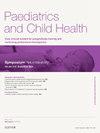Unveiling the hidden risks: therapeutic creep in mild hypoxic ischemic encephalopathy
Q3 Medicine
引用次数: 0
Abstract
Hypoxic-ischemic encephalopathy (HIE) in neonates, particularly near-term and term infants, presents significant risks to survival and neurodevelopmental outcomes. Mild HIE, comprising about 50% of HIE cases, has traditionally been seen as lower risk compared to moderate and severe HIE. However, emerging research suggests that mild HIE can lead to similar adverse outcomes to more severe cases, including brain injury and neurodevelopmental impairment. Therapeutic hypothermia (TH), a proven intervention for moderate to severe HIE, has been largely excluded for mild HIE management due to a lack of robust evidence. This gap has led to a phenomenon known as therapeutic creep, where interventions like TH are extended to milder cases without solid guidelines, raising concerns about its appropriateness and efficacy. This short article discusses the possible limitations of this approach and highlights why evidence from new research is urgently required.
揭示潜在风险:轻度缺氧缺血性脑病的治疗蠕变
新生儿缺氧缺血性脑病(HIE),特别是近期和足月婴儿,对生存和神经发育结果具有重大风险。轻度HIE约占HIE病例的50%,与中度和重度HIE相比,传统上认为其风险较低。然而,新兴的研究表明,轻微的HIE可能导致与更严重的病例相似的不良后果,包括脑损伤和神经发育障碍。治疗性低温(TH)是一种已被证实的治疗中度至重度HIE的干预措施,但由于缺乏有力的证据,它在很大程度上被排除在轻度HIE治疗之外。这一差距导致了一种被称为治疗蠕变的现象,即在没有可靠指南的情况下,将TH等干预措施扩展到较轻的病例,这引起了对其适当性和有效性的担忧。这篇短文讨论了这种方法可能存在的局限性,并强调了为什么迫切需要新的研究证据。
本文章由计算机程序翻译,如有差异,请以英文原文为准。
求助全文
约1分钟内获得全文
求助全文
来源期刊

Paediatrics and Child Health (United Kingdom)
Medicine-Pediatrics, Perinatology and Child Health
CiteScore
1.20
自引率
0.00%
发文量
70
 求助内容:
求助内容: 应助结果提醒方式:
应助结果提醒方式:


